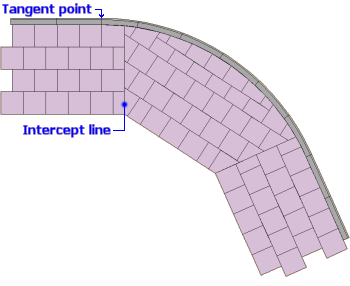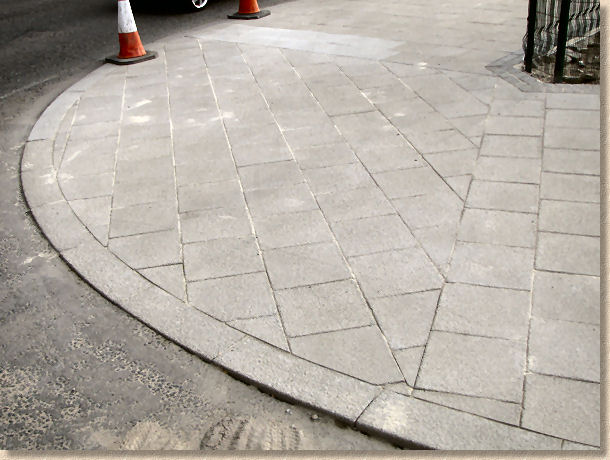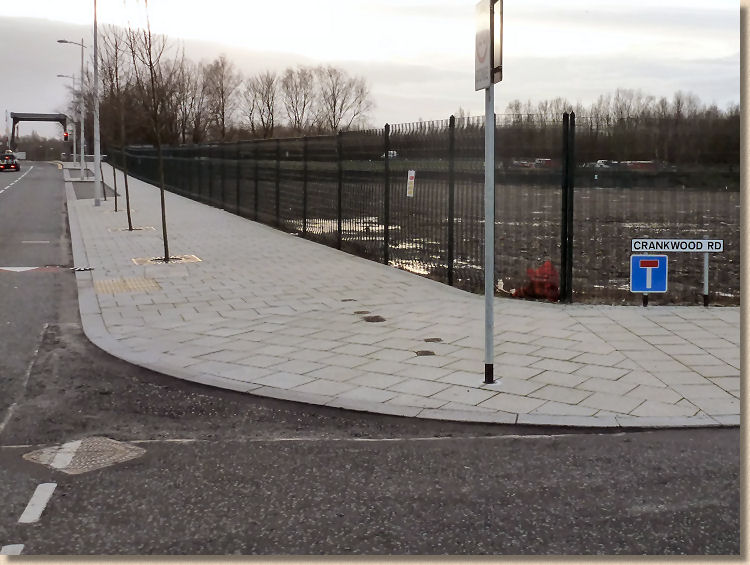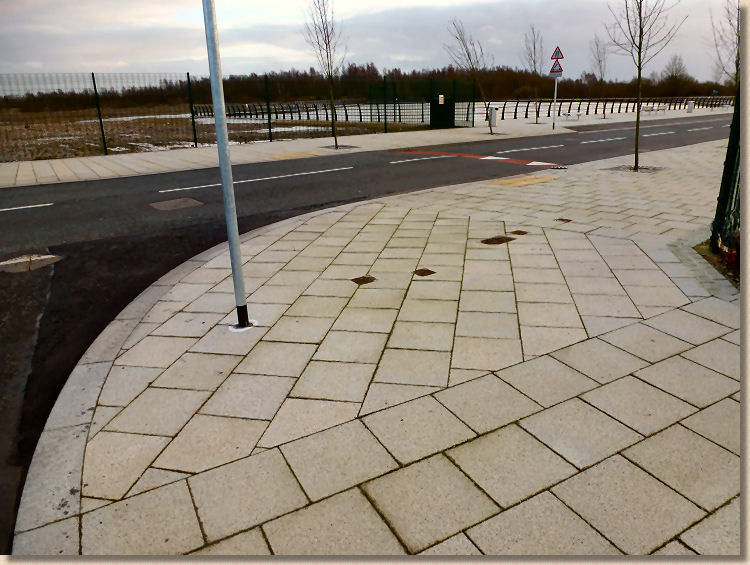Introduction:
This page is part of a series of pages that consider cutting techniques used with flags (or slabs, if that's what you call 'em). The first page examined the basic principles of cutting-in: this page looks at two simple solutions for corners and junctions of flagged pavements; related pages consider other cut features such as notches, curves and flagged radii. See the menu above right or the related pages listing at the foot of this page for a more comprehensive guide to what's available.
Run Out Corners
Many flagged pavements, particularly those constructed using pressed concrete flags, don't provide a budget sufficient to cover the cost of cutting and installing a ring or fan radius. They are simple, utilitarian pathways with no requirement for a decorative or high aesthetic finish. A run-out corner detail is the simplest and therefore the cheapest solution to a corner or junction of two flagged pavements. The main path is "run out" to intercept the kerb line and cut to suit, while the subsidiary path is cut to abut the rear edge of the main path. A typical example is shown below.
In many cases, it should be apparent which of the two paths is the main, but if in doubt, follow this hierarchy.
The main path will be:
-
the path that runs alongside the major carriageway
or
-
the path that carries most pedestrian traffic
or
-
the path that is wider
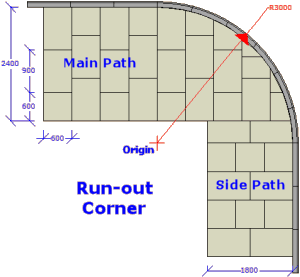
The laying pattern is maintained, as far as practical, and the guidance given on other pages regarding the cutting of curves and the avoidance of small pieces should be followed.
One major consideration for run out corners is the setting of levels. While the rear edge of the main path may normally be set to a level that would coincide with the kerb line where the two meet, it must be borne in mind that the side path will probably have a cross fall, so the level of the main path rear edge should be established to allow for this.
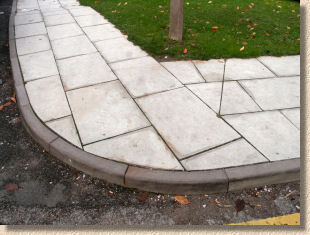
The big problem with simple run out corners becomes evident on 'open' layouts such as the one shown opposite. Human nature being what it is, pedestrians tend to take the shortest route between two points and so the corner gets cut, and people walk on the grass, eventually killing it off. This is less of a problem where walls are present, but on open layouts, a triangular infill section is often added to the junction to eliminate this problem.
A more elegant solution is the New Town Corner....
However, when done well, even a simple run-out corner can be a thing of true beauty, as evidenced by this perfectly executed example from Glasgow, using mixed porphyry flagstones laid as transverse courses with a shot-textured dark whinstone kerb. Simply stunning workmanship!
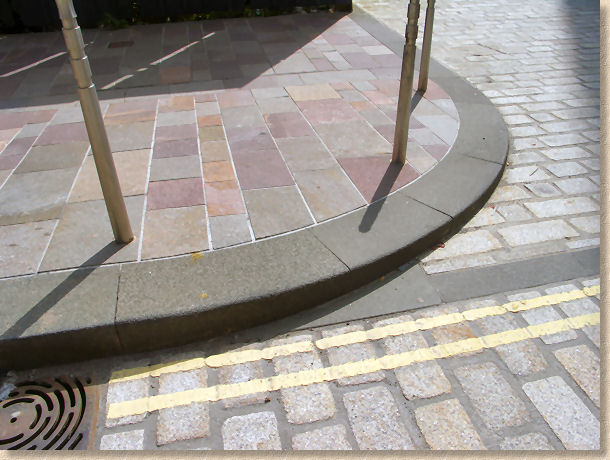
And another example of top class work, this time using sawn-six-sides honed Highmoor Yorkstone with a granite radius kerb. The filthy sub-humans responsible for the dabs of chewing gum that despoil this gorgeous paving deserve to have their legs removed below the knee. Spitting out chewed gum is a disgusting habit and a health risk, but it also spoils beautiful stone.
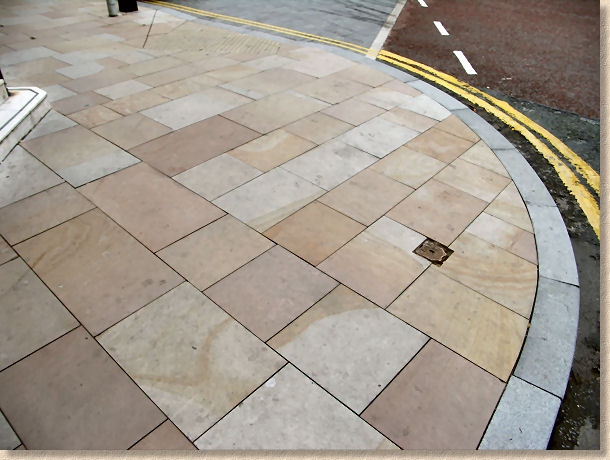
Just for a bit of something different..... a run-out corner in clay pavers.....
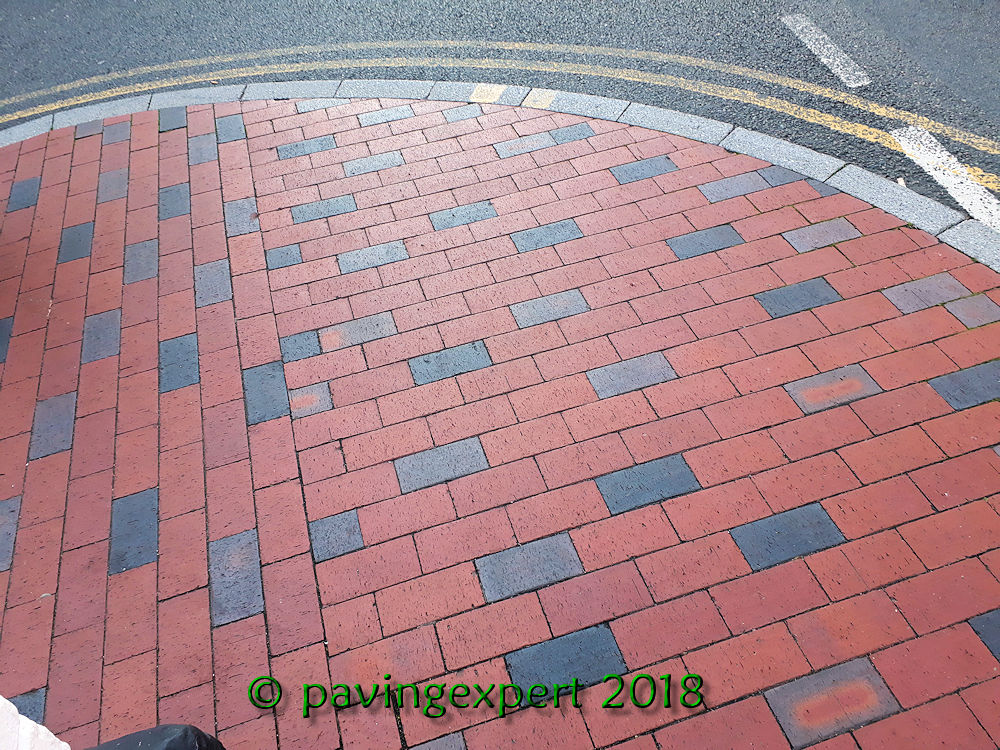
New Town Corner
This is a layout that was popular for a period of about 30 years, from the 1950s to the 1980s but is seen less often nowadays. It is intended to reduce the amount of cutting required from the tradesman, compared to either a ring or a fan radius, yet be somewhat more stylish than a simple run out corner. As can be seen from the diagram, the cutting is restricted to the interface with the rear of the kerb line plus the two intercept lines.
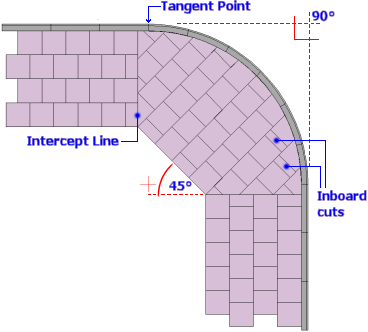
In this basic example, the two paths just happen to meet at a right angle, and both paths are of equal width. The intercept lines are created at (or very close to) the tangent points of the kerb line, allowing for a number of full flags to span the two intercepts, and the alignment of the corner paving is exactly at 45°. Not all New Town Corners will be this pretty, as can be seen below.
The vast majority of the corner paving comprises full, uncut flags. The flags adjacent to the kerb line are cut in accordance with the principles outlined on the Cutting Curves page, and there is some inboard cutting visible towards the lower end of the corner paving.
In this atypical example, the two paths meet at more of an awkward angle (24° if you really want to know!), and the intercept lines are established away from the tangent point. By bringing the intercepts inside the radius kerbing, the width of the path is reduced slightly, but this is a common situation where walls are present.
Also notice that the layout of the paving has remained longitudinal (ie: roughly parallel to the kerb) whereas the previous example featured transverse courses. This has resulted in additional inboard cutting close to the kerb, where a half- or two-thirds width flag has been used to eliminate any small pieces. Inboard cuts have also been used to eliminate any small triangular pieces at the intercepts.
